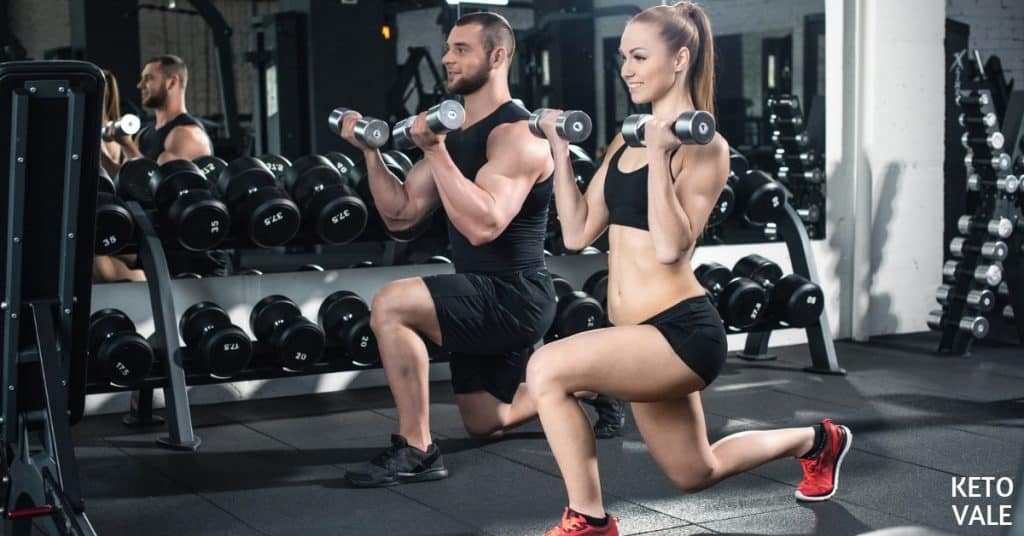A lot of people decide to incorporate exercise into their routine when they embark on a weight loss journey.
We all know that exercise has numerous benefits, including better insulin sensitivity, more energy, better mood and sleep, improved cardiovascular health, and potentially a more rapid weight loss. Awesome, right?
When most people hear “exercise,” they imagine some sort of cardio (running, swimming, cycling, and the like).
Cardio is far from being the only option, though. And in some ways resistance training can be superior to it, especially if you want to become more toned, get some definition, and, ultimately, look fit and sexy (don’t we all!).
If you have no time for long cardio sessions or find them boring, we have good news for you – weightlifting (and resistance training in general) is an excellent way to get good results relatively quickly, and your workouts don’t need to be long. And you can do it together with keto. Yay!
Cardio definitely has its place and merits, so if you’re enjoying it, there’s no reason to stop (with one caveat: if you’re doing lots of it, you might wish to dial it down, in order to give your body time to rest and heal). But if you really want to level up your workout routine, your best bet would be to add some sort of resistance training to it, such as weightlifting.
So are keto diet and weightlifting a good combination? Are there any contraindications to doing both?
What are the things you need to consider before you begin?
Can you gain muscle on keto?
What is it that makes weightlifting so beneficial?
Read on to find out.
Benefits of Weightlifting
If you’re not convinced yet, let us tell you more about the benefits of weightlifting:
#1. Increased Muscle Mass
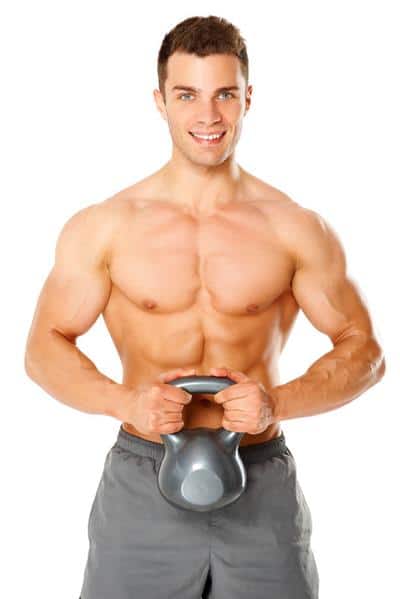
If you want to lose weight and tone up at the same time, and look good in a swimming suit, building muscle is a very important part of the equation.
For that, you need some sort of anaerobic exercise, such as weightlifting, adequate protein, and enough rest between your workouts (to give your body time to recover and to build muscle).
More muscle translates into looking better and having more confidence, and is vital for combating age-related sarcopenia, which is the muscle loss that comes with age (1).
#2. Better Weight Loss and Weight Management
Muscle burns more energy than fat, even when you’re not doing anything (2).
Besides, weight training burns a good amount of calories, too. So if you’re looking for ways to boost your metabolism, weightlifting is an excellent idea. And if you combine it with a weight loss meal plan, you will reach your goal even faster.
#3. Increased Bone Density
Another awesome benefit of weightlifting is that your bone density will increase with time.
If you’re in your 20s or 30s, you might not really feel concerned by this now, but it’s essential for your bone health later in life. Weightlifting lowers your risk of osteoporosis and fractures (3).
#4. Improved Balance and Posture, and Fewer Episodes of Back Pain
Chances are, if you have a desk job, your posture is taking a hit from the many hours that you spend sitting, and that you’re suffering from the occasional episode of back pain.
Thankfully, weightlifting is a great way to combat that – strengthening your core will mean that your balance and posture will improve, and that your spine will be better protected against injury (4, 5, 6, 7).
#5. Reduced Risk of Injury From Other Sports and Everyday Activities
Weightlifting improves the health and strength not only of your muscles, but also of your bones, ligaments, and tendons, which makes you less prone to injury.
On top of these, weightlifting has a number of other benefits, which it shares with other types of exercise, such as better cardiovascular health, better blood sugar control and lower risk of type 2 diabetes, and better sleep. There are plenty of reasons to grab a barbell!
Additionally, many people report feeling less hungry from weightlifting than compared to cardio, so take that into consideration if you’re struggling to stay under your daily calories.
#6. Better Sleep
Have you ever noticed that you sleep better after a good weight training session? It’s no accident.
Research shows that resistance training improves sleep quality in older adults (8). One study found that patients who weight trained reported better scores on a self-report questionnaire called the Pittsburgh Sleep Quality Index.
The sample size used was small and there was not a control group in this study. However, these results indicate that weight training is especially important as you age as sleep is often affected during this time (9).
Sleeping better can also help you recover in between workouts. You’ll have better gains and strength when it’s time to train again.
Can Keto Diet and Weightlifting Be Combined?
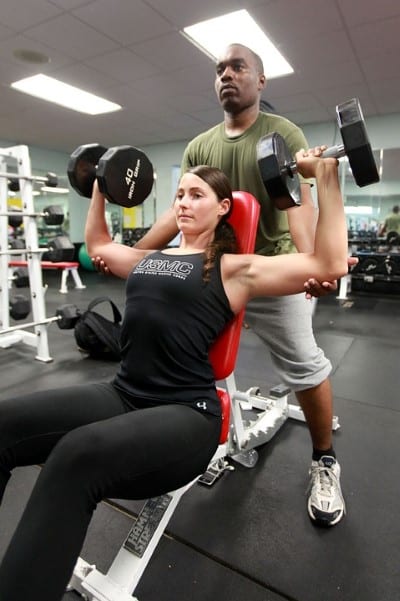
Can you do keto and weight lifting together? Or are carbs necessary in order to experience the benefits of weightlifting?
In short, yes, you can do keto and weightlifting at the same time and experience the amazing benefits of both.
Contrary to popular belief, carbohydrates aren’t essential for muscle growth – protein is. You might often see mentioned the role of insulin in gaining muscle, but there are a few things to consider.
Insulin is raised (to an extent) by a number of things, including by protein coming from your diet. Of course, the effect is much less dramatic than when you’re eating carbs, but you don’t need heaps of it to be effective.
Protein, and leucine in particular (which you can find in eggs, for example) is the main driving force behind protein synthesis.
In order to grow muscle, you need adequate amounts of protein and energy. If you’re fat-adapted, that energy can come from fat, and if you have a lot to lose, it can come from your own body fat. That’s why many overweight people can gain a good amount of muscle even while losing weight.
The body is capable of adapting to all kinds of stimuli, and is actually super flexible in doing so.
Insulin plays another important role – it counteracts muscle breakdown. You know what else can protect your muscles from breaking down? A ketogenic diet with adequate protein (10).
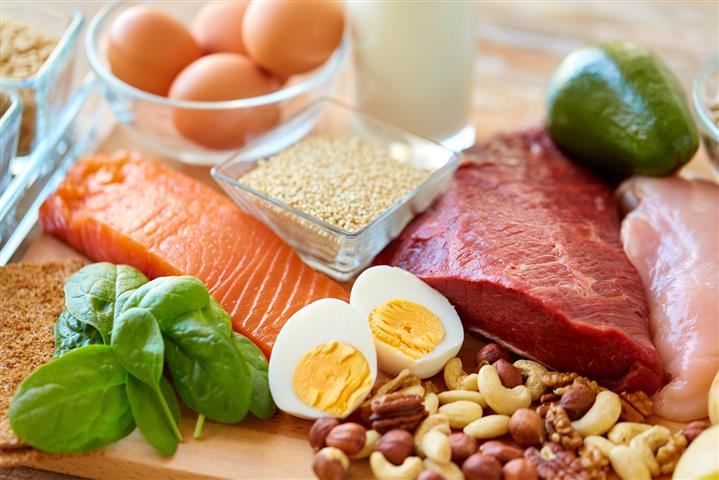
How Much Protein Is Considered “Adequate”?
Adequate protein is not a fixed number, as it depends on a number of factors. The general recommendation is to aim for a range from 0.68 to 1 g per pound of lean body mass (LBM, or your total weight minus your body fat) when dieting, or around 1.5 to 2.5 g per kilogram of LBM.
If you’re doing weightlifting, and especially if you’re highly active in your day-to-day life, it’s a good idea to aim for the higher end of that range, or 0.8 to 1 g / lb of LBM, in order to facilitate protein synthesis. More than that will not be harmful, but simply isn’t necessary.
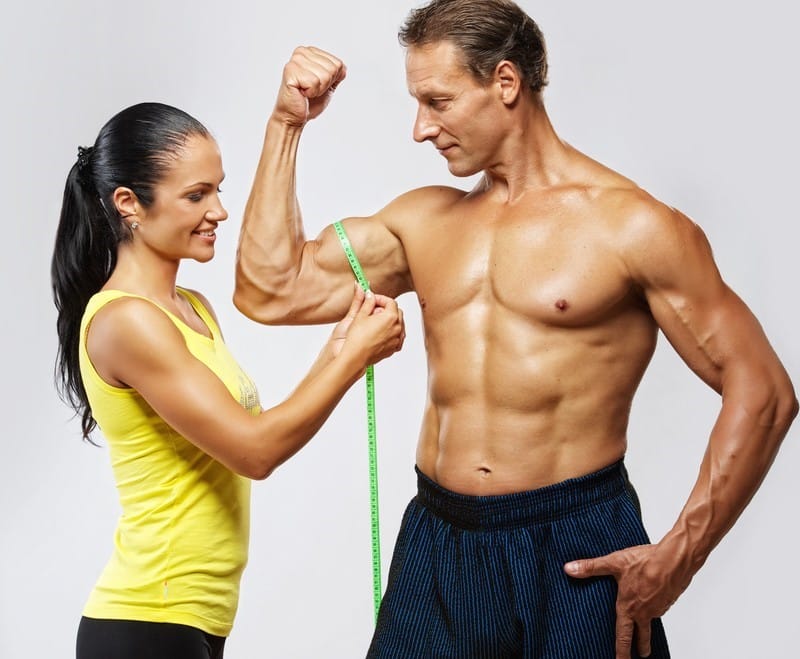
If you’re eating adequate protein, while at the same time progressively overloading your muscles (i.e. incrementally increasing the weights you’re lifting) and giving your body enough rest between workouts, your body will adapt to this – you will build muscle and become stronger.
This is especially true for people who are new to weightlifting – a phenomenon commonly referred to as “newbie gains.” Your body has never experienced this particular form of stress before, so it adapts to it fairly quickly.
On a very basic and primal level, this is your body’s way to make sure that you can survive – and flourish – under these new conditions, so it’s quick to react and to put on some muscle.
As an illustration, consider the following:
It’s possible to put up to 24 lbs (12 kg) of muscle mass in the first year of training. In the second year, building muscle slows down significantly – you can expect to gain a maximum of around 12 lbs of lean mass, while in the third year it’s even lower – 6 lbs of LBM (11).
Once the stimulus becomes frequent, your body gets used to it, so it’s no longer “necessary” to adapt to it so quickly. This is why it’s also a good idea to change training programs every once in a while, and to force yourself to adapt to new, unexpected challenges.
This leads us to the next question:
Can Keto Be a Good Diet for Bodybuilding?
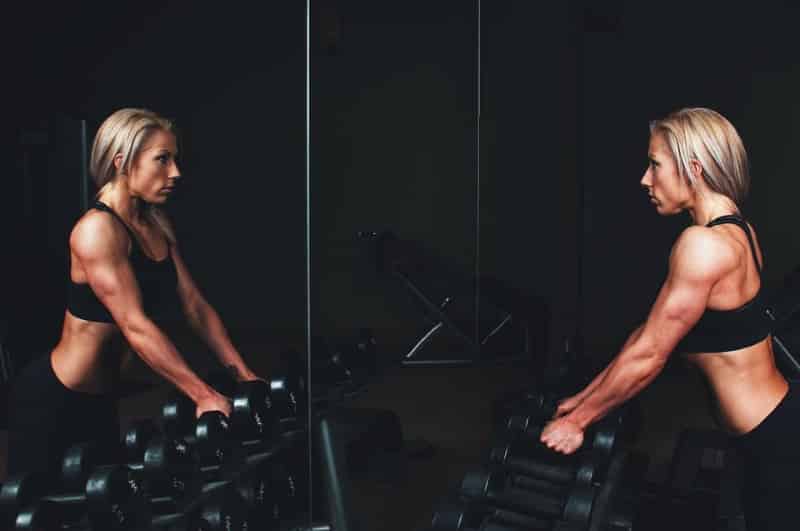
Can more experienced lifters do keto and still gain strength and muscle?
Simply put, yes, even if you’re an experienced lifter, you can switch to keto and benefit from its numerous benefits. There are a few things to keep in mind – we’ll get to that in a second.
Regarding bodybuilding in particular, you can definitely train for hypertrophy, follow a ketogenic diet and get good results.
What are the conditions to make that happen?
First of all, you need adequate protein – if you already have experience with bodybuilding, you have definitely heard that a number of times. Aim for around 1 g per pound of your lean body mass.
The best option is to get it from natural foods, such as meat, eggs, and dairy, but if you’re struggling with consuming enough protein, you can throw a low carb protein powder in the mix.
Make sure to always check the label for the amount of carbs it contains, as some protein powders have plenty (and plenty’s too much; anything that’s higher than 1-2 carbs per serving might not be optimal).
Second, during the adaptation phase, and especially in the first few days after you reach ketosis, you might experience a drop in strength and performance, and for some people it can be significant.
Do not panic, though. The reason for this is that you’re forcing your body to make a fairly complicated metabolic transition – from burning carbs for fuel, it now needs to start burning fat instead.
However, this is only temporary and your body will adapt to it soon enough. You’ll be able to find your pre-keto strength and continue progressing once you become fat-adapted – you just need to be patient.
Third, if you’re at your goal body fat percentage, and have nailed down your diet and training, and you’re past the adaptation phase, you might benefit from doing a cyclical ketogenic diet, where you eat a small amount of carbs before or during your workout in order to boost your performance.
We recommend this to people who have enough experience with both keto and weightlifting, as it’s a fairly complex diet protocol (and no, you cannot use it as an excuse to occasionally stuff your face with carbs), and will require a fair amount of planning and willpower.
If you’re already an intermediate or an advanced lifter and are looking for an additional way to boost your performance, it’s worth considering.
Fourth, if you’re already lean, and aren’t a novice lifter anymore, you’d need to consume a surplus of calories in order to build more muscle.
It doesn’t need to be a lot, though – a 10% surplus on top of your maintenance calories is enough, and will give you the same results in terms of muscle gain as a 30% surplus (minus all the fat you’d be gaining at 30%). Muscle gain takes time, with or without keto, and lots of consistent efforts in the gym.
And last (but equally important!), to gain muscle you need a solid training program.
If you’re an experienced bodybuilder, your best bet would be to look for programs for experienced lifters, by concentrating on the aspect of lifting that you want to master – training for hypertrophy is not the same as training for explosive power, or for strength.
There are plenty of good weightlifting communities online, so if you have questions, you can always reach out to them.
For beginners, Stronglifts 5×5 is a great weightlifting program that will give you strength and good results in terms of muscle gains.
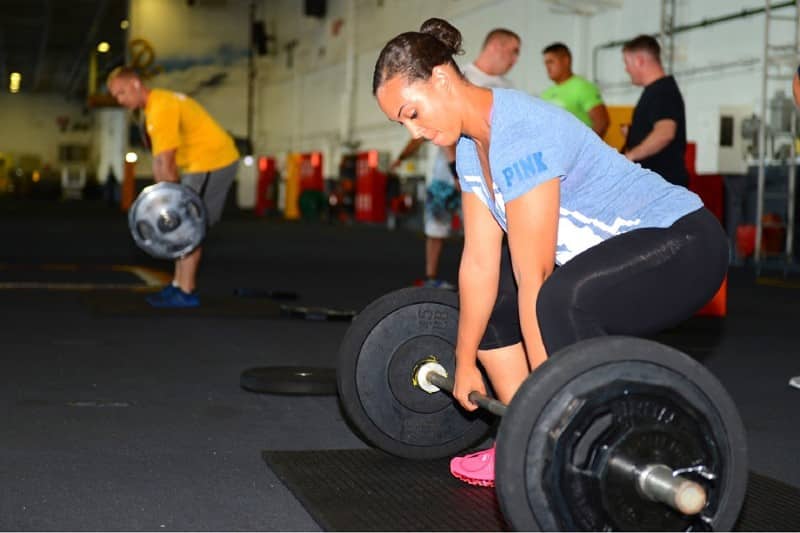
So, How Do You Begin Weightlifting?
If you have never held a barbell in your life, weightlifting can feel intimidating. Have no fear, though! Even the leanest, strongest men and women at the gym were once complete newbies – we all start from somewhere.
You need the following equipment – a barbell, weight plates, a power rack, a bench, and dumbbells. Almost every gym has these (but before you sign a contract, make sure they do), and some people decide to make their own home gym.
You also need comfortable clothes and flat shoes – no need to buy expensive weightlifting shoes in the beginning. Just don’t train in your running shoes; find a flat, stable shoe in which you feel comfortable).
Form is key. In the beginning, you should start with the barbell, and progress from there – even if it feels light. If it feels too heavy (the bar itself is 20 kg, or 44 lbs), you can start with a lighter barbell until you get used to it. It’s definitely a good idea to hire a coach for the first couple of sessions, so that someone knowledgeable can show you the basic compound lifts – the squat, the deadlift, the bench press, and the overhead press – and correct your form, as necessary.
Do not increase the weights if your form is off. If you’re unsure of your form, it might be a good idea to have someone check it – again, a coach is your best bet.
Experienced lifters might also be able to give you valuable insights and help you improve, but keep in mind that just because someone is lifting heavy weights, it does not necessarily mean that they have a good understanding of proper form.
If a coach is not an option, you can take a video of yourself while performing a specific lift, and then upload it to a dedicated weightlifting Facebook group or an online forum for advice – although it sounds kind of scary, most people are very open to helping novice lifters and to giving sound advice, so don’t be shy, even (and especially!) if you feel that your form needs to improve.
Finding a solid program that you’re comfortable with is also necessary for the best results. A great example would be Stronglifts 5×5, but there are plenty of other apps and programs that you can use.
Are there different types of weightlifting?
There are two main types of weightlifting – powerlifting and Olympic weightlifting. Each type has its own set of movements, rules, and competitions, and each requires specific skills. And yes – both can be combined with keto!
The three main lifts in powerlifting are the squat, the bench press and the deadlift, and when they get into weightlifting, most people begin with these.
A good powerlifting program will have you systematically increase the weight you’re lifting, in order to progress and gain strength. Again, form is everything, so if you’re unsure of your form, dial down the weights and make sure you can perform each lift correctly (and safely).
Olympic weightlifting has two main movements – the snatch, and the clean and jerk.
They’re both overhead, explosive movements that are performed quickly, and require a lot of explosive force, balance and flexibility to be done correctly. They aren’t beginner’s lifts by any means, and you’ll likely need to build a solid amount of strength before you can manage them.
Technique and form are extremely important, so if you want to start with Olympic weightlifting, we recommend finding a dedicated sports club, or a coach, and also building your strength progressively with the three basic lifts (the squat, the bench press and the deadlift).
Olympic weightlifting can be more difficult to get into, because you need to be in a very good shape before you begin, but it’s an amazing sport to consider.
The takeaway
Weightlifting is an awesome way to get results fairly quickly, and will give you a big confidence boost, which helps immensely if you want to change the way you look and feel about yourself.
If you’re in good health and don’t have any specific back, spine, posture or joint problems, or other serious health issues, you should be able to start weightlifting. If you have any doubts or a specific health problem, please speak to a doctor first.
The barbell (20 kg / 44 lbs) might be too heavy at first – if that’s the case, use a lighter barbell, dumbbells or kettlebells until you become stronger.
Each movement should be controlled and done with proper form. If your form is not good, do not increase your weights, as you risk injuring yourself (leave your ego at the door – heavy does not equal better!).
If you’re new to keto and to weightlifting, there’s no reason to wait with either one of those – you can safely start with both at the same time. Keep in mind that your performance will take a hit during the adaptation phase, and just give yourself time to adapt (and make sure you’re getting all your electrolytes in).
If you’re overweight, you don’t need to wait to lose the weight first, and then start weightlifting – you can certainly do both, and having a lot of weight to lose will allow you to put on muscle while being in a deficit.
And, for the ladies, don’t be scared of lifting heavy weights – you won’t become “bulky.” You simply don’t have the hormonal profile for it. It takes an enormous amount of time and dedication for a woman to build serious muscle, and it certainly won’t happen overnight. Instead, you’ll get stronger, leaner and sexier – sounds amazing, right?
So, have you already started weightlifting? What’s your experience with it? What were your main struggles? If you haven’t, is there something specific that is worrying you? Feel free to reach out to us – we’d be happy to hear from you!
